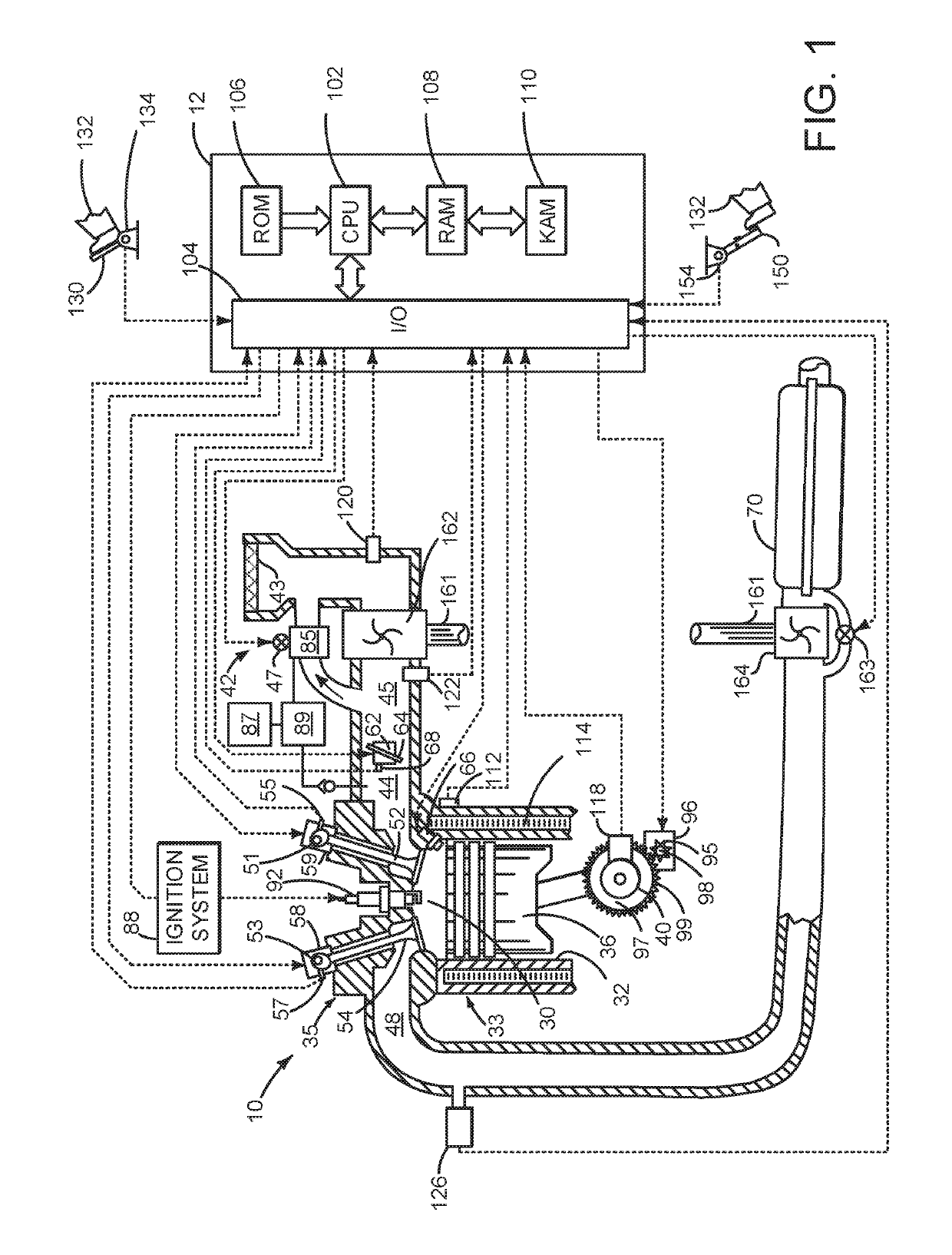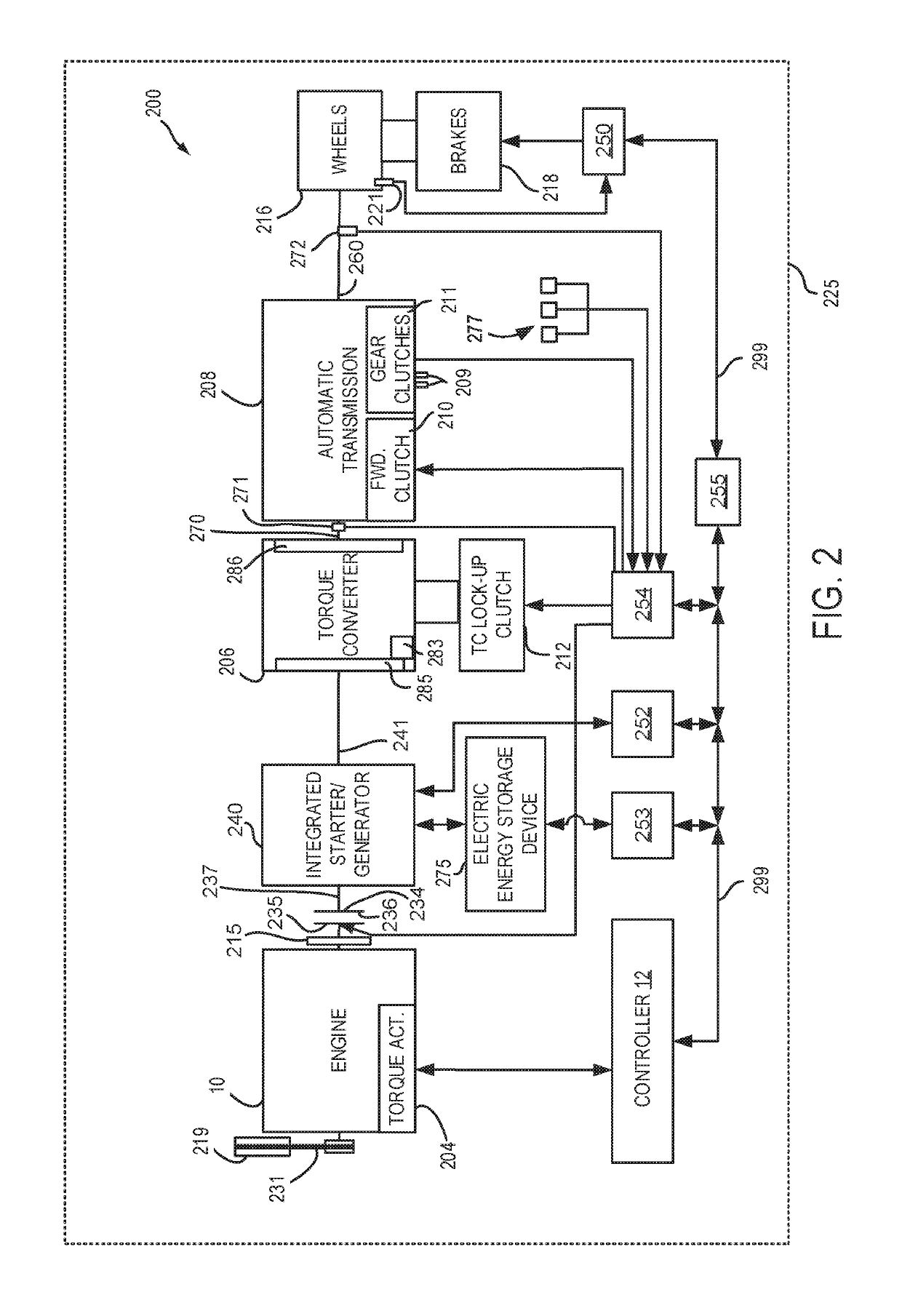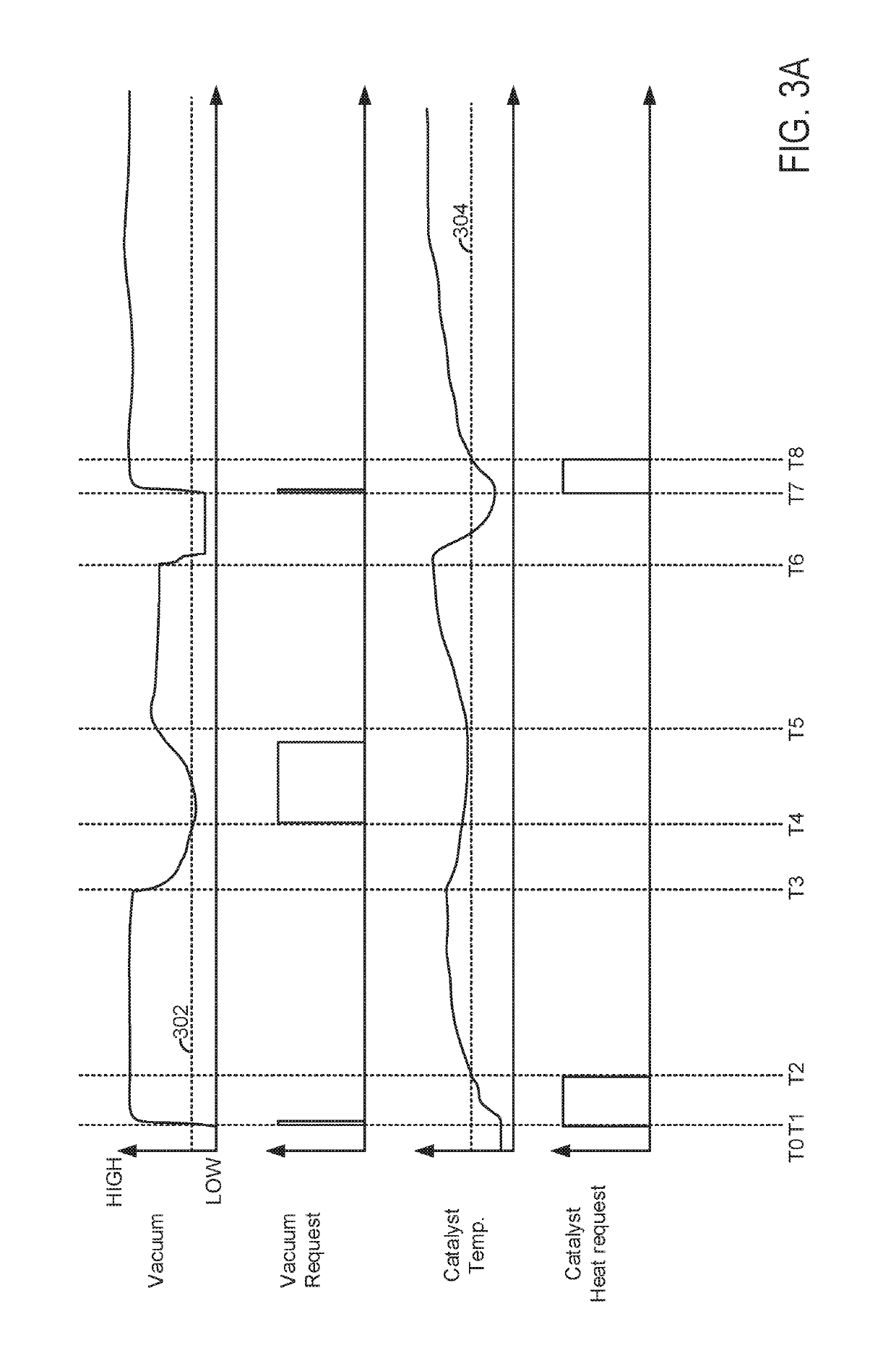Methods and system for operating an engine
a technology of hybrid vehicles and powertrains, applied in the direction of machines/engines, electric control, transportation and packaging, etc., can solve the problems of reducing the vacuum produced by the engine, reducing the efficiency of catalysts, and driver fatigue, so as to achieve the effect of reducing the number of exhaust gas conversions, and increasing catalyst efficiency
- Summary
- Abstract
- Description
- Claims
- Application Information
AI Technical Summary
Benefits of technology
Problems solved by technology
Method used
Image
Examples
Embodiment Construction
[0015]The present description is related to increasing catalyst heating and vacuum production via a motor of a hybrid vehicle. The motor may be included in a parallel or series hybrid vehicle. The hybrid vehicle may include an engine as shown in FIG. 1. The engine of FIG. 1 may be included in a driveline shown in FIG. 2. The system of FIGS. 1 and 2 may provide the operating sequence shown in FIGS. 3A and 3B. The method of FIG. 4 may be included in the system of FIGS. 1 and 2 to provide the operating sequence illustrated in FIGS. 3A and 3B.
[0016]Referring to FIG. 1, internal combustion engine 10, comprising a plurality of cylinders, one cylinder of which is shown in FIG. 1, is controlled by electronic engine controller 12. Engine 10 is comprised of cylinder head 35 and block 33, which include combustion chamber 30 and cylinder walls 32. Piston 36 is positioned therein and reciprocates via a connection to crankshaft 40. Flywheel 97 and ring gear 99 are coupled to crankshaft 40. Option...
PUM
 Login to View More
Login to View More Abstract
Description
Claims
Application Information
 Login to View More
Login to View More - R&D
- Intellectual Property
- Life Sciences
- Materials
- Tech Scout
- Unparalleled Data Quality
- Higher Quality Content
- 60% Fewer Hallucinations
Browse by: Latest US Patents, China's latest patents, Technical Efficacy Thesaurus, Application Domain, Technology Topic, Popular Technical Reports.
© 2025 PatSnap. All rights reserved.Legal|Privacy policy|Modern Slavery Act Transparency Statement|Sitemap|About US| Contact US: help@patsnap.com



